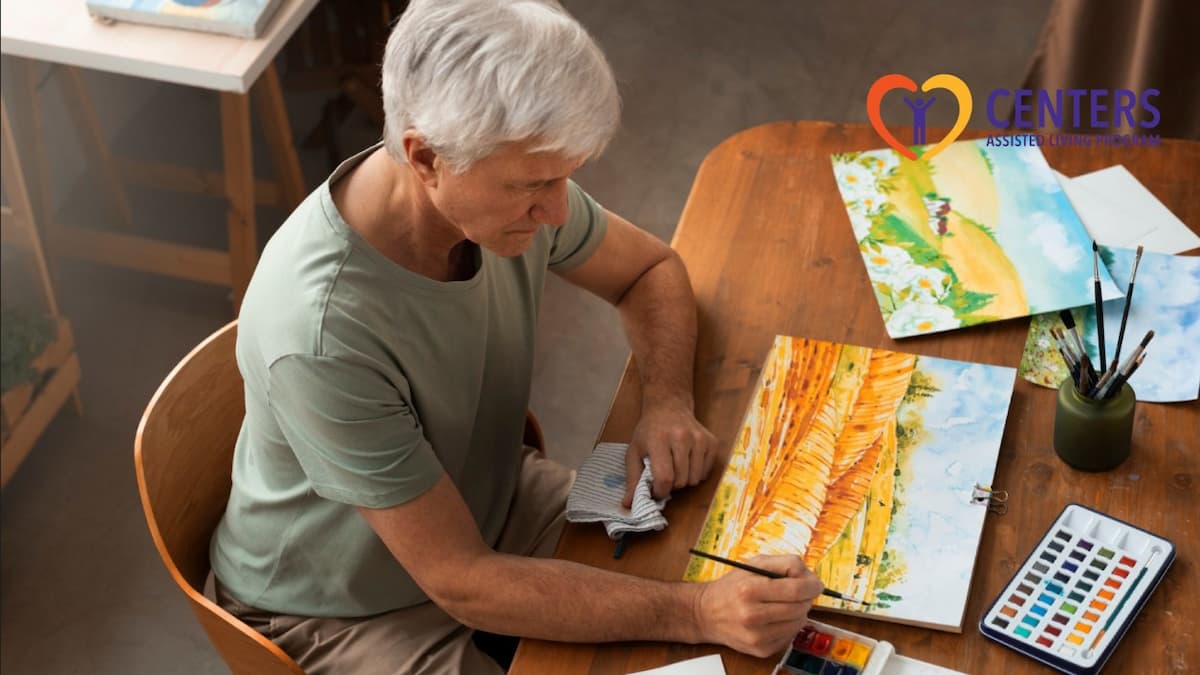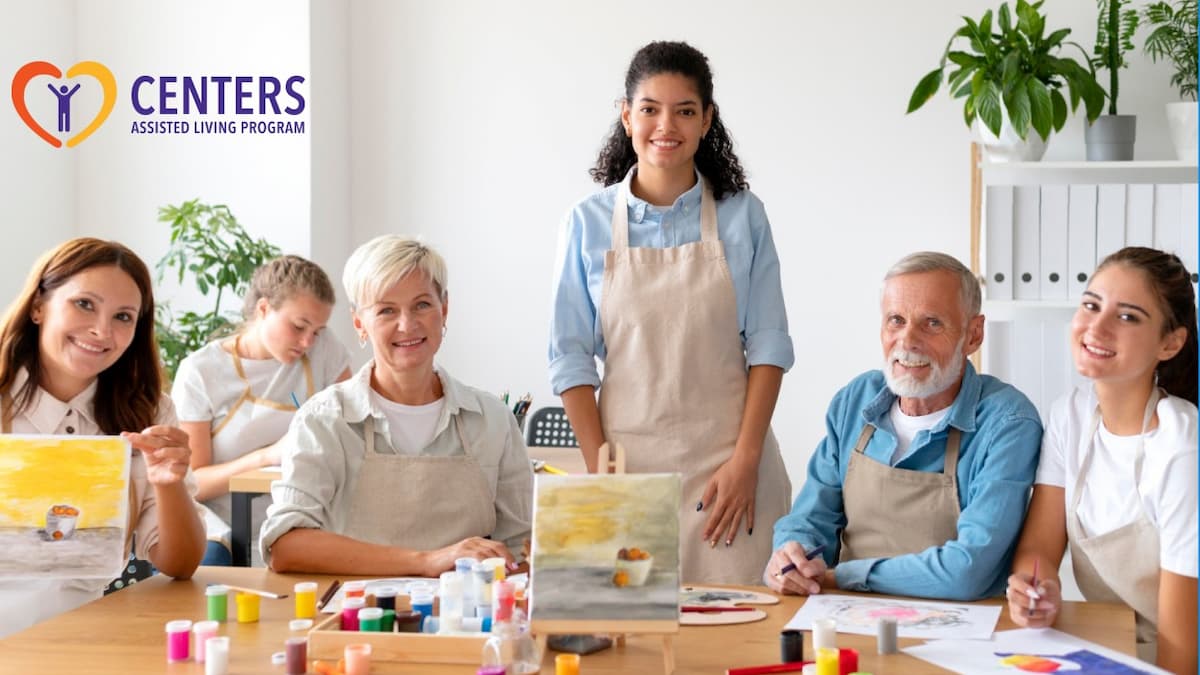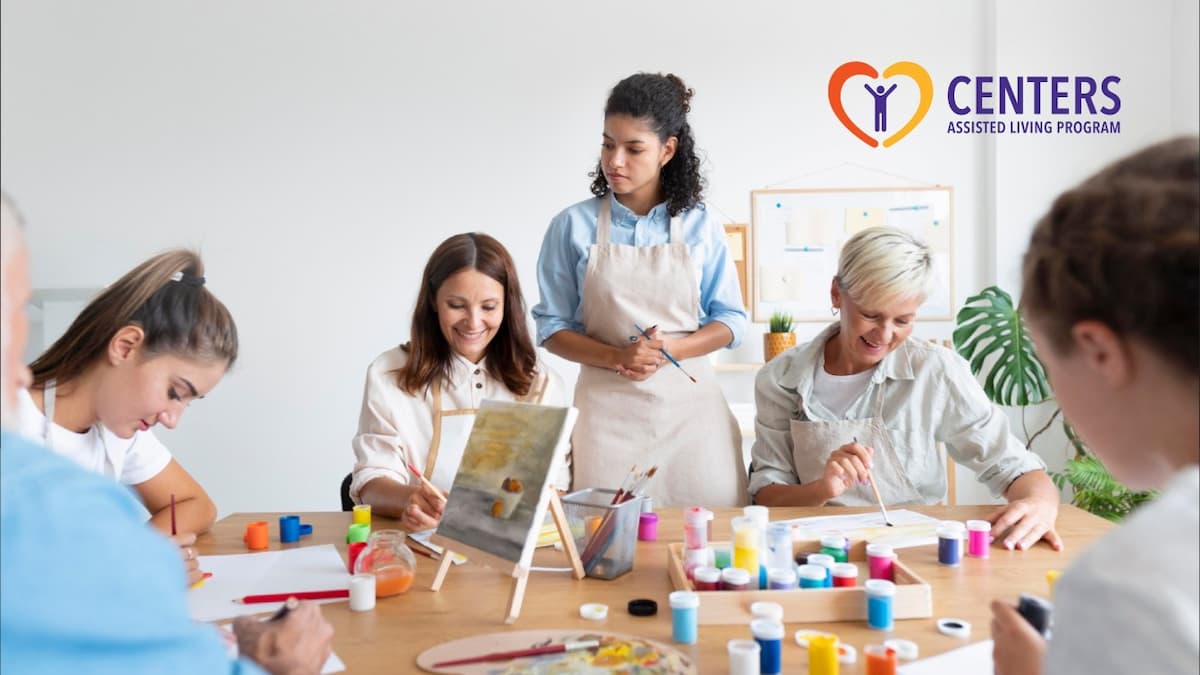Key Points:
- Tailored art events can stimulate seniors’ cognition, fine motor skills, and emotional health.
- Group craft workshops foster social connection, reduce isolation, and ignite creative expression.
- Accessible, adaptive design and thoughtful planning make events inclusive for all ability levels.
As people age, opportunities to express creativity, engage socially, and continue learning become more important than ever. Arts and crafts events for senior citizens offer more than leisure, they provide meaningful avenues for mental stimulation, emotional well-being, and connection. In assisted living or senior care environments, well-designed creative programming can transform routines into vibrant experiences rich with purpose and joy.
In this article, we explore how to conceive, run, and refine arts & crafts events aimed specifically at older adults. We cover benefits, event types, accessibility adaptations, promotion strategies, and measurement of impact. Whether you manage a senior living facility or support a local seniors’ center, this guide shows how to build creative experiences that truly uplift.

Why Arts & Crafts Events Matter for Seniors
Cognitive and Brain Health Benefits
Creative activities force the brain to work in new ways, planning, sequencing, problem solving, and pattern recognition. Several studies indicate that crafting can help maintain executive function and slow age-related cognitive decline.
In one review, visual and craft arts conducted in group settings were shown to reduce loneliness and support cognitive abilities among older adults.
Motor Skills, Dexterity, and Physical Engagement
Fine motor control often declines with age, affecting tasks like buttoning clothes or holding utensils. Crafting, such as beading, painting, or clay modeling, offers practice in hand-eye coordination, grip strength, and precision.
Moreover, many craft activities require reaching, bending, or handling tools, which can gently support mobility and hand flexibility when done safely.
Emotional Well-Being, Self-Esteem, and Stress Reduction
Completing a creative project gives a tangible sense of accomplishment. This boosts self-esteem and counters feelings of loss or purposelessness that sometimes accompany aging.
Arts and crafts also act as a meditative “flow” activity, focusing the mind on the present, reducing anxiety, and promoting calm.
Social Connection and Community
Group craft events provide built-in opportunities for conversation, shared purpose, and peer encouragement. Isolation and loneliness are known risk factors for depression and declining health in older adults, which is why community events and volunteer opportunities for seniors play such a vital role in overall wellness.
In communal crafting, participants can exchange ideas, admire each other’s work, and build relationships over shared creative goals.
Types of Arts & Crafts Events for Seniors
Designing a successful event starts with choosing the right format and theme. Every senior community is unique, so it’s essential to plan activities that align with residents’ abilities, preferences, and emotional needs. Below are several types of arts and crafts events, each with detailed insights into why they work, what they achieve, and how to implement them effectively.
1. Themed Workshops or Series
- Seasonal crafts such as winter ornament painting, autumn leaf printing, spring floral wreaths, or handmade Valentine’s cards.
- Memory-themed projects, like heritage scrapbooks, photo collages, or “life story” journals that encourage storytelling and reminiscence.
- Skill-based classes such as watercolor painting, knitting, pottery, or jewelry making, designed to teach both technique and patience.
A series format (e.g. weekly or monthly) encourages return attendance and skills progression.
2. Drop-in Creative Hours
Short, open studio times allow residents to come and go, try materials, or continue previous work. These lower-pressure sessions serve those who prefer flexible timing.
3. Intergenerational Craft Events
Few experiences light up a senior community like art sessions that include children, grandchildren, or local students. Intergenerational crafts foster connection across age groups, reduce loneliness, and bring fresh perspectives into the creative space.
These events can take many forms:
- Family Craft Days, where families visit for a joint painting or clay session.
- Community School Collaborations, where students create decorations, cards, or murals alongside residents.
- Story and Craft Circles, where elders share personal memories that children then illustrate or re-create through art.
4. Exhibition, Market or “Art Fair” Events
Displaying or sharing artwork gives creative work a deeper sense of meaning. Hosting a small art show, gallery wall, or community craft fair lets participants showcase their creations to family, staff, and local visitors.
Event ideas include:
- A Resident Art Exhibition with categories such as painting, knitting, or recycled art.
- Holiday Craft Markets, where proceeds from small sales can support activity funds or local charities.
- Themed Gallery Nights, where attendees enjoy refreshments while viewing artwork accompanied by residents’ written reflections.
5. Art Therapy or Facilitated Creative Sessions
While all arts and crafts can be therapeutic, sessions led by trained facilitators introduce structured emotional and psychological benefits. Art therapy uses guided creative expression to help seniors manage anxiety, grief, cognitive changes, or social withdrawal.
These sessions may include painting emotions, sculpting personal symbols, or crafting memory boxes that tell personal stories. Participants are encouraged to explore feelings safely through color, texture, and imagery rather than words.
Art therapy is especially valuable for seniors coping with memory loss, dementia, or chronic illness, as it supports communication beyond language. It also enhances relaxation and promotes positive identity through creative empowerment.
When conducted in assisted living environments, such programs can be seamlessly integrated with other therapeutic activities like music or sensory engagement, creating a holistic wellness approach.
6. Mobile or Pop-Up Craft Stations
Creativity shouldn’t be confined to one room. Mobile or pop-up craft stations bring art directly to residents in lounges, patios, gardens, or hallways, encouraging spontaneous participation.
Portable carts can be stocked with paints, papers, markers, and craft kits, allowing quick setup anywhere. This flexibility ensures accessibility for residents with mobility challenges or those less inclined to join group events.
Rotating weekly or monthly themes, such as “Nature Sketching,” “Color Your Mood,” or “Mini Canvas Art”, keeps the experience fresh and inclusive. Staff can schedule short 15- to 30-minute sessions that feel lighthearted and fun.
These pop-ups are especially effective in memory care units, where shorter, sensory-rich activities can sustain focus and joy without overwhelming participants.
Designing the Event: Best Practices and Accessibility

Understand Participants’ Needs
- Assess physical limitations (arthritis, vision impairment, mobility constraints)
- Understand cognitive status (memory, attention span)
- Gauge past interests to tailor themes
Adapt Tools and Materials
- Use ergonomic tools: thicker-grip paints, padded scissors, lightweight brushes
- Provide magnifiers, adjustable lighting, and high-contrast materials
- Choose adaptive techniques (collage rather than cutting small shapes, clay over fine pottery)
Simplify Instructions
- Use clear step-by-step guides, visual cues, and live demos
- Minimize too many steps in one session, especially for memory-impaired individuals
- Provide helpers or assistants when needed
Create an Encouraging Atmosphere
- Emphasize that process matters more than perfection
- Encourage sharing of stories behind works
- Offer light refreshments to foster social time
Choose the Right Location and Layout
- Ensure good seating with armrests
- Use tables with enough space for supplies without clutter
- Control noise and distractions
- Have materials arranged in reachable containers
Plan for Material Rotation and New Themes
Changing media (fiber arts, painting, clay, mosaics) keeps engagement high. You can rotate monthly or seasonal themes to spark curiosity.
Sample Event Ideas and Project Suggestions
Here are tailored project ideas suited to senior participants, in a variety of craft domains:
- Memory Collage / Story Box: Use magazine cutouts, fabric scraps, and printed photos to create visual stories
- Painted Terracotta Pots: Simple hand-painting on small planters
- Greeting Card Kits: Pre-cut shapes, stamps, and embellishments for card creation
- Beaded Bracelets or Bookmarks: Use larger beads for easier handling
- Clay or Air-Dry Clay Bowls: Mold simple shapes with minimal pressure
- Adult Coloring with Custom Designs: Provide printed templates reflecting nature or geometric motifs
- Textile Art / Yarn Weaving: Small loom weaving, wall-hangings
- Sun Catchers / Stained Glass Craft (Using Safe Materials)
- Shadow Boxes with Mementos
Varying craft types ensures participants can gravitate toward their preferences and try new things.
Event Promotion and Sustaining Engagement

Effective Promotion Strategies
- Post printed flyers in common areas with sample images
- Announce through newsletters, meal announcements, or internal bulletins
- Invite families via mail or email to attend mini showtimes
- Use peer ambassadors, residents who enjoy crafting can champion events
Incentives and Recognition
- Hold a “Creative Showcase” where participants’ work is displayed
- Offer certificates of participation or simple rewards (e.g. gift card, small supplies)
- Encourage participants to gift their creation to family on special occasions
Feedback and Iteration
- After each event ask participants what they liked, what was difficult, and ideas for new crafts
- Note recurring feedback: time constraints, tool difficulty, preferred themes
- Adjust upcoming events based on feedback
Measuring Impact and Outcomes
Track both qualitative and quantitative metrics:
- Attendance numbers per event
- Repeat participation (how many return)
- Self-reported satisfaction or mood changes
- Observations of social interaction
- Cognitive / functional assessments over time (if paired with care evaluation)
Correlating event data with resident well-being helps refine programming.
Overcoming Common Challenges
Resistance or Hesitation
Some seniors may feel they lack “artistic talent.” Address this by framing events as creative play rather than fine art, assuring every contribution is meaningful, an approach that aligns with understanding different levels of assisted living care and personalized support.
Physical or Cognitive Limitations
Offer simplified versions or paired assistance. For example, collage (cutting/pasting) can replace intricate cutting, or larger beads or pre-cut pieces reduce frustration.
Material Costs and Storage
Use cost-efficient supplies (recycled paper, basic tools) and rotate materials. Involve budget planning and allocate a small supply fund.
Declining Novelty
Keep content fresh, invite guest artists, rotate themes, co-host intergenerational events, or explore new media (e.g. digital art).
Real-life Impact: Evidence & Case Snapshots
- The National Institute on Aging highlights how arts involvement in older adults can support health, well-being, and independence.
- A combined recreation and craft intervention improved fine motor function, self-confidence, and problem solving in a clinical study.
- Programs that integrate group crafting were shown to reduce loneliness and support overall mental health.
- One assisted living facility reported improved resident satisfaction and more social interaction after launching a regular arts workshop series.
These insights confirm that arts & crafts events are not a peripheral add-on—they can become core to a senior’s quality of life.
FAQs
How often should arts & crafts events run to keep interest high?
Offering one structured event per week along with drop-in creative hours provides consistency and flexibility without overwhelming participants.
What if some residents are reluctant to join?
Host low-pressure introductory sessions, pair hesitant participants with peers, and emphasize that “process matters more than outcome.”
How do we choose crafts that suit mixed ability levels?
Offer tiered tasks (basic & advanced versions), adaptive tools, and assistance. Select projects where participants can contribute at their own pace.
Create, Connect, and Thrive at Centers Assisted Living
Our arts and crafts events are more than hobbies, they’re opportunities for joy, purpose, and belonging. Residents can explore new skills, rediscover old passions, and build friendships through shared creativity. Whether painting, pottery, or seasonal crafts, every session strengthens fine motor skills and sparks emotional well-being. Each activity is led by patient, encouraging staff who adapt projects to all ability levels, ensuring every resident can participate proudly.
Schedule a visit to experience our centers firsthand and see how simple materials turn into meaningful moments. At Centers Assisted Living, we help every resident discover the joy of making something beautiful, together.


